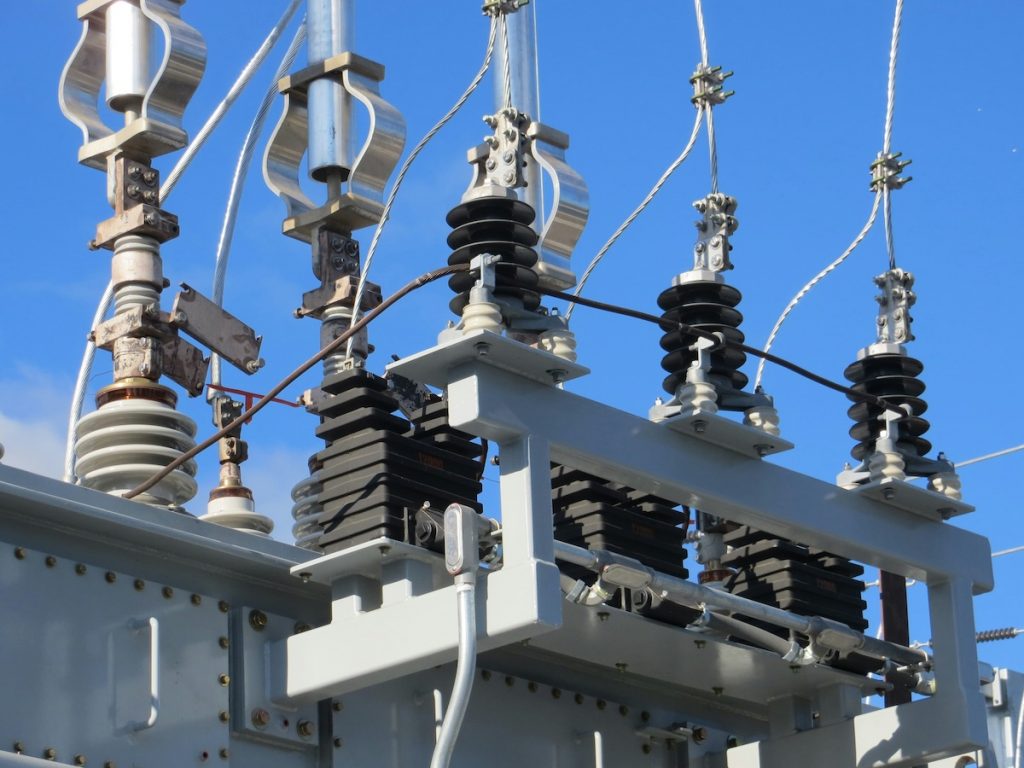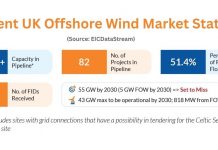 A staggering 91.5% of large projects in the Energy, Utilities, and Resources (EU&R) sector go over schedule, over budget, or both. EU&R companies are awash with data. Their challenge is how to turn this raw data into actionable insights to manage and maintain the health of their expensive and complex assets. It takes an AI-driven composable approach to data management argues Kevin Price, Global Head of Enterprise Asset Management at IFS, using technology to build streamlined solutions that sift and sort the raw data into actionable insights. Only this way can EU&R companies effectively optimise assets across their complex energy distribution networks to ensure critical investment decisions are based on reliable data.
A staggering 91.5% of large projects in the Energy, Utilities, and Resources (EU&R) sector go over schedule, over budget, or both. EU&R companies are awash with data. Their challenge is how to turn this raw data into actionable insights to manage and maintain the health of their expensive and complex assets. It takes an AI-driven composable approach to data management argues Kevin Price, Global Head of Enterprise Asset Management at IFS, using technology to build streamlined solutions that sift and sort the raw data into actionable insights. Only this way can EU&R companies effectively optimise assets across their complex energy distribution networks to ensure critical investment decisions are based on reliable data.
The EU&R industry is collecting data, but a lack of correct or understandable data means that big decisions on power grids, energy lines, and wide-scale assets are just not informed enough. Operational success, profitability, and customer satisfaction for EU&R companies needs an approach to data collection and analysis that ensures investment decisions are sound and that proposed projects are worthwhile.
Technology paves the way for data-driven decision making
Enter a more composable enterprise approach to delivering the essential data for optimised end-to-end asset lifecycle management for EU&R companies. Advanced technologies such as Industrial AI, asset investment planning, and predictive maintenance, are all crucial to EU&R companies looking to collect and analyse essential data to better inform business decisions and asset investments, fast-track sustainability goals, and improve the overall health of critical infrastructure.
Understanding the data deluge
Collecting energy data is no mean feat! The data is both diverse and diffuse. In an energy grid, data is provided by various sources, including smart meters, sensors on grid infrastructure such as substations and power lines, and weather stations. Additional sources include data from power plants, distribution network operators, and even individual consumers through smart home systems.
The result is a data deluge, leaving many EU&R companies unable to make sense of contextual imprints but are still to this day collecting more and more data. Yet, for the large part, these companies are unsure of how to use this data effectively, or at all.
Some are just inundated with so much data to the point that it is now not feasible to sift through it all, while others do not have the expertise to action the issue even with the correct data in place.
As a result critical asset data is either unrecognised or going unused leaving businesses unable to monitor the full condition of assets, and unable to ensure full asset health and optimisation.
Enter condition-based monitoring
To combat the issue, many companies have turned to condition-based monitoring solutions, that help organisations to understand the condition, performance, and expected availability of your assets.
It works by leveraging insights to reduce unplanned asset downtime, drive predictive maintenance, optimise energy and resources, and enhance asset planning strategies at every level to meet short-, medium-, and long-term objectives.
Why data is the key to surviving infrastructure strain and climate shocks
The global power grid has and will continue to be more distributed than ever —which only complicates data management. Data is collected from the many assets accross the grid, but this distribution of assets are vast and many are aging, meaning constant maintenance is required.
Yet, innovating and rebuilding the grid is no quick fix. It involves significant investment in new infrastructure while maintaining existing operations where finding replacement parts for outdated infrastructure is difficult, and insufficient funding has led to degraded assets and increased risk.
Climate change and extreme weather events only exacerbate grid failures. In the UK, recent storms such as Storm Darragh and Storm Eowyn have left thousands of UK homes without power or train services as 90mph+ winds brought down electricity lines. Globally, the issue carries on, as seen in the 2024 Balkan heatwave and North American weather events such as Hurricane Helene, Hurricane Milton, Hurricane Beryl, and more.
Traditional grid planning has long focused on centralised generation, transmission, and distribution systems designed for one-way power flow. However, the rise of Distributed Energy Resources (DERs) has highlighted significant flaws in this traditional model.
Here comes AI
To fully optimise grid operations, companies need a full understanding of grid health, where it’s performing well and where it is underperforming – only then can companies determine whether an asset needs to be retired, maintained, fixed. These conditions will determine capital funding, and where investments are important.
AI-influenced Risk-Based Inspections (RBI) are now in high-demand within the market. The capabilities of RBIs allow companies to more intuitively facilitate the detection of which areas of the grid are weak, prone to failure, and where will be the biggest impact before major environmental events i.e. floods, hurricanes occur. It’s all in the preparation, to ensure assets are strong and good enough to survive the impact.
EU&R companies can then prepare for major events in multiple ways and with confidence, from redirecting the grid to incorporating FSM, AAM, AI Modelling.
And AI-driven data decision making goes beyond just the physical grid. Companies can use data-based insights, real-time decision-making models, and AI help prioritise critical infrastructure investments and monitor the health and performance of assets to extend lifecycles.
Beyond this, companies can make sure the on the ground workers are available and ready to help pre- and post-event, all while assessing the sustainable impacts of these events.
It’s clear that AI-driven asset management technologies have the potential to help entire companies, regions, and industries — but Utilities must work together, sharing goals and constraints to establish new benchmarks.
Maintaining assets the composable way

In all asset-intensive industries, businesses expect to purchase an asset and see it perform to its best ability, often these are deployed in risk-critical operational roles. Naturally, if it isn’t performing well, then businesses want to know why before it has huge impacts on the business, operations, and the environment.
Here, AI-embedded Enterprise Asset Management (EAM) software improves visibility, reliability, and real-world efficiencies. But to succeed in knowing where an asset is failing and why, it’s not always necessary to buy an entire solution. It’s where a composable framework comes in. Designed to be flexible, composable EAM solutions can help companies install only the applications that they will benefit from, allowing then to hone in and map specific problem areas.
IFS Customers report a 20% increase in uptime, 16% less unplanned downtime, and 14% lower maintenance costs with cloud asset management solutions from IFS.
Full lifecycle management – with sustainability payoffs!
An effective asset lifecycle management solution involves data that supports operational, tactical, and strategic decisions. With advanced Enterprise Asset Management (EAM) software with embedded industrial AI, EU&R companies can be sure the full asset lifecycle is monitored — maximising uptime, reducing costs, and supporting sustainable operations.
Industrial AI, paired with strategic asset tools such as IFS Copperleaf’s Asset Investment Planning (AIP) solution offers advanced tools for strategic planning, resource optimisation, and scenario analysis, enabling data-driven decision making and efficient capital allocation.
And it impacts sustainability too. Anglian Water, the largest water recycling company in England and Wales by geographic area, uses IFS Copperleaf Decision Analytics Solution to holistically evaluate investment projects and demonstrate progress against strategic objectives and ESG goals. It enables Anglian Water to model the impact of different asset investment plans and account for private and societal costs associated with flooding in decision making.
The IFS Copperleaf case in point
To support its ambitious carbon reduction targets, Anglian Water uses IFS Copperleaf Cost Estimation to model capital carbon and capture operational carbon associated with an asset’s full lifecycle. The solution provides visibility of capital baselines in their proposed investments from which performance against targets are measured. This capability allows engineers and designers to challenge the supply chain in the early design stages to consider lower carbon solutions such as optimising the use of existing assets, low carbon construction techniques and/or the use of alternative low carbon materials.
It makes financial sense too and can impact ROI—analysis of their investment planning portfolio shows that a reduction in capital costs and a reduction in capital carbon come hand in hand.
Turning data into decisions: The AI-powered assets powering the energy grid of the future
As the pressure mounts from climate change, aging infrastructure, and evolving energy models, it’s increasingly clear that legacy approaches to managing business-critical assets are no longer fit for purpose.
With technologies such as condition-based monitoring and AI-enabled predictive maintenance and risk-based inspections EU&R companies are beginning to turn the tide. Optimising asset management is about transforming raw data into strategic, actionable insights that protect asset health, maximise investments, and enhance resilience across sprawling, distributed networks. The shift to composable, AI-powered EAM is more than a technological upgrade—it’s a new operational mindset.




